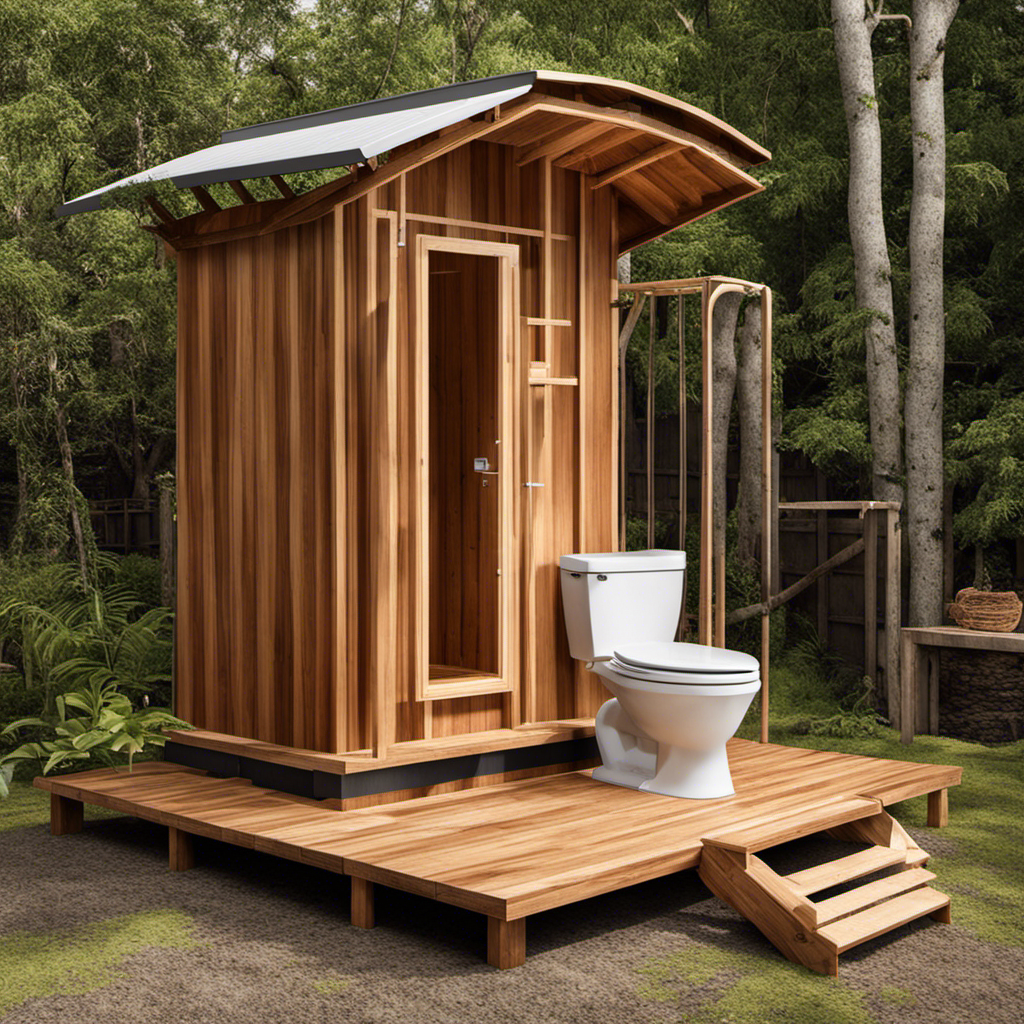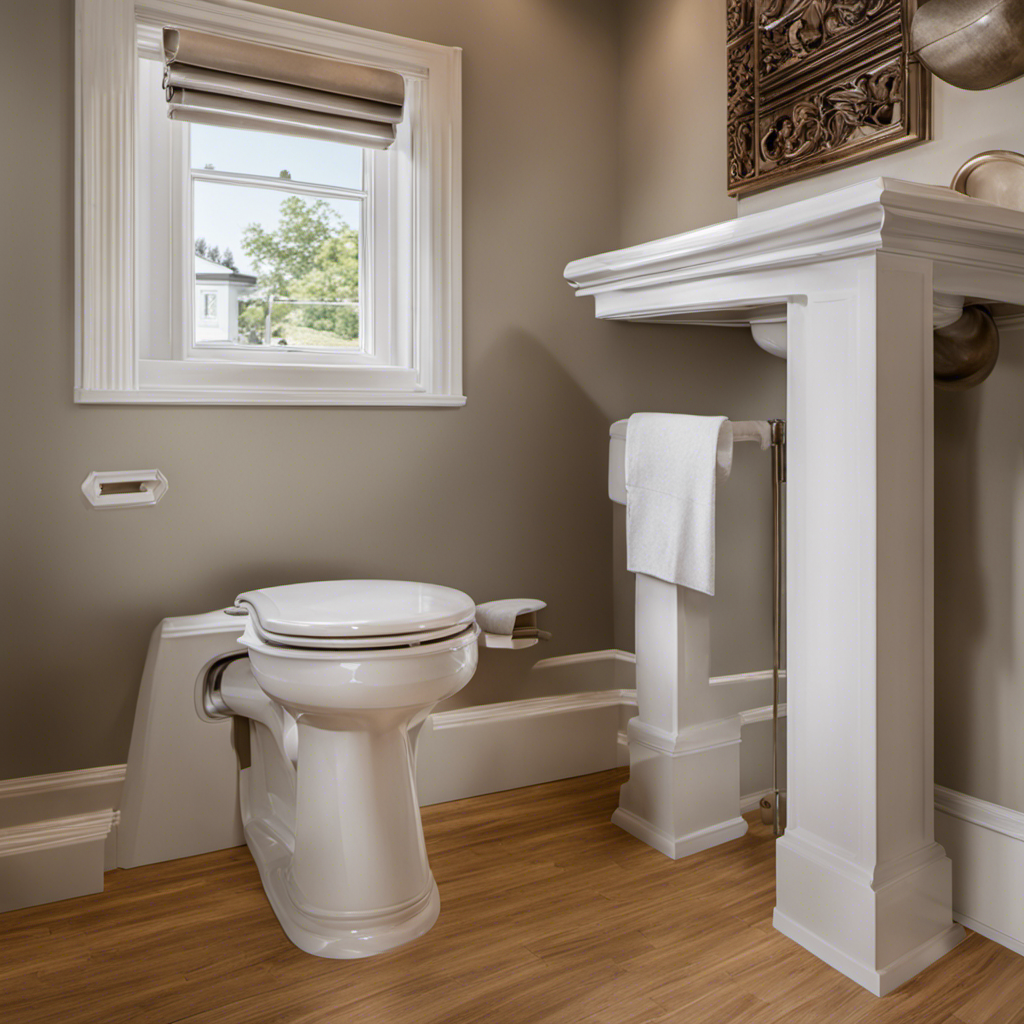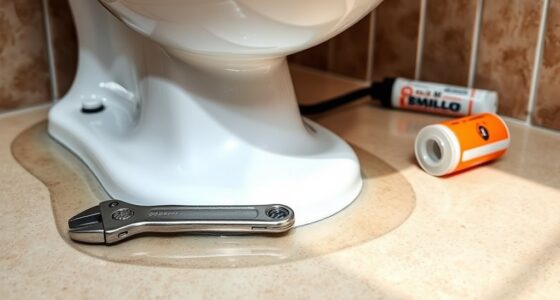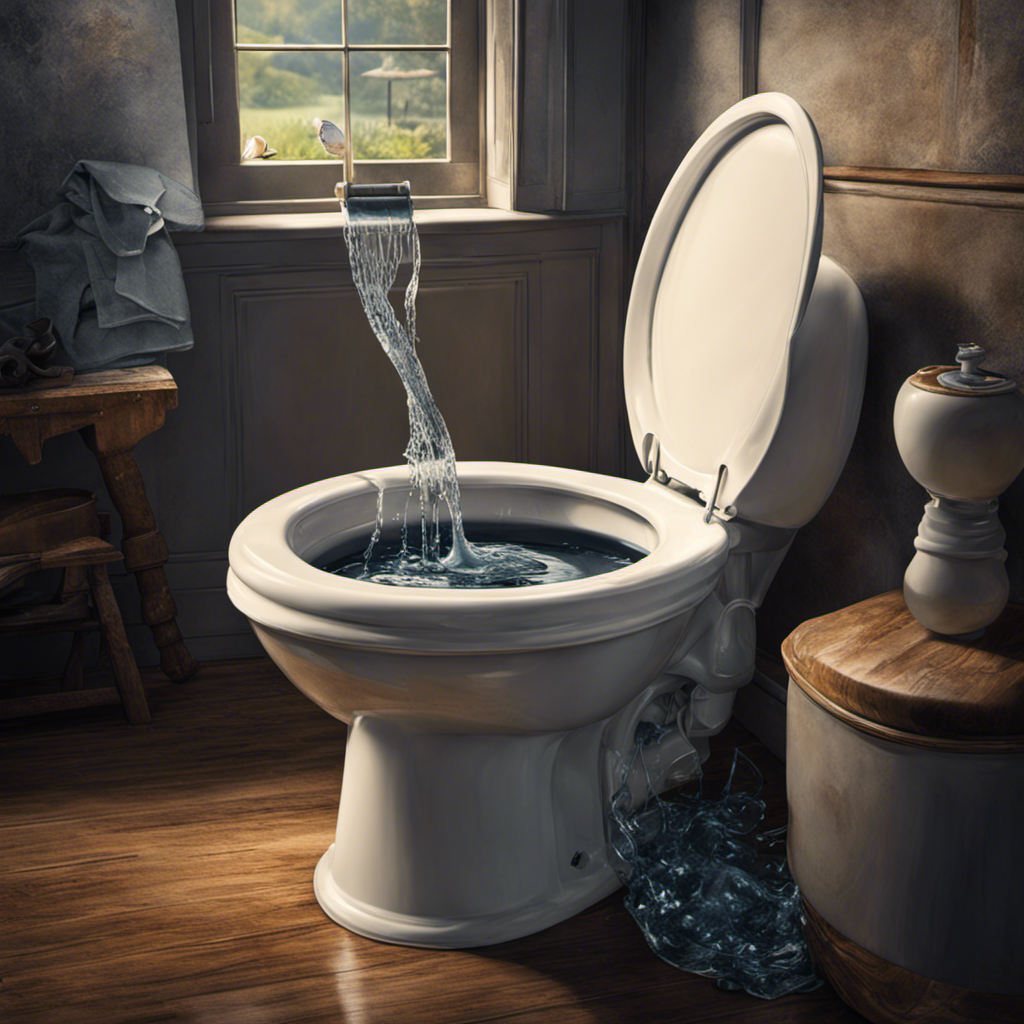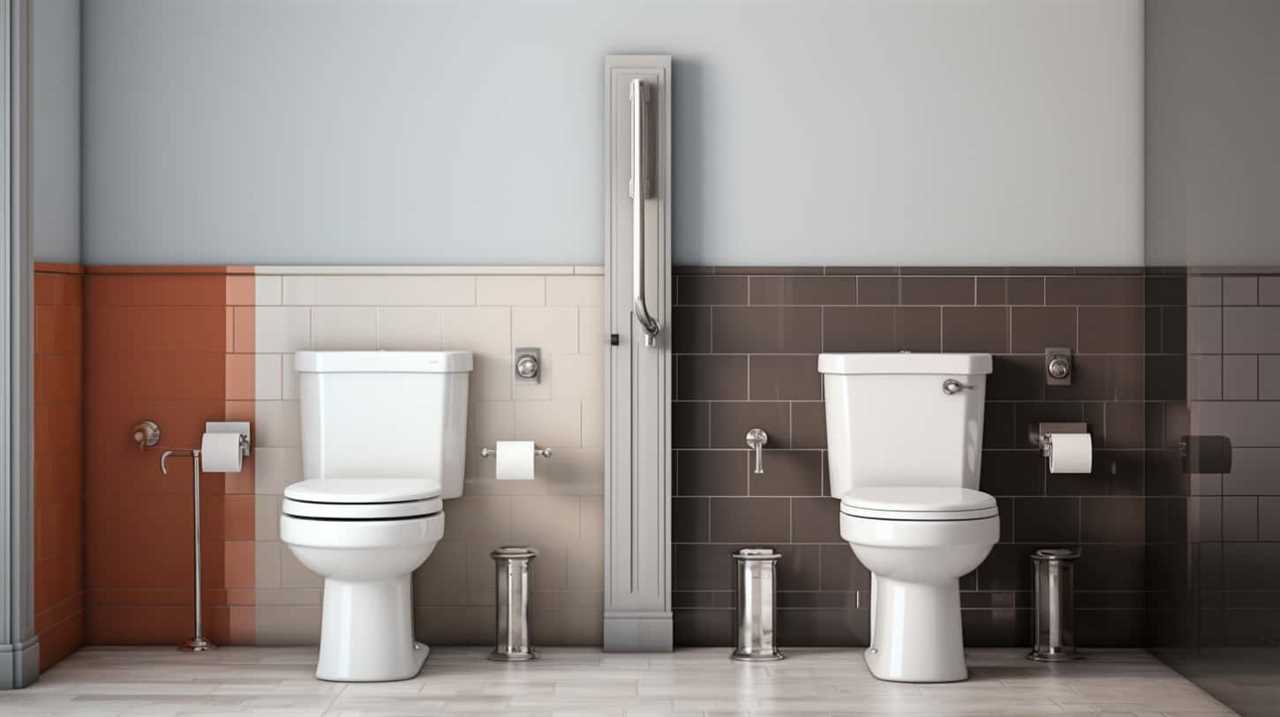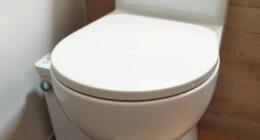Imagine having a toilet that not only saves water but also creates nutrient-rich compost for your garden. In this article, I will guide you through the process of creating a composting toilet, step by step.
We will explore selecting the right materials, building the composting chamber, installing the ventilation system, and maintaining the composting process.
I will also address common issues and troubleshooting techniques.
Get ready to transform your waste into a sustainable solution for both your home and the environment.
Key Takeaways
- Choose biodegradable materials for the composting toilet
- Insulate the chamber with foam board or fiberglass for temperature regulation
- Install a vertical vent pipe to allow odors and gases to escape
- Regularly turn the compost to promote oxygen flow and reduce odor
Selecting the Right Materials
When selecting materials for a composting toilet, it’s important to choose ones that are biodegradable and easy to break down. The first step is to choose the right container for the toilet. This container should be large enough to hold a sufficient amount of waste and should have a tight-fitting lid to prevent any odors from escaping.
Additionally, it’s crucial to find suitable organic matter to use in the toilet. This can include things like sawdust, wood shavings, or dried leaves. These materials will help absorb moisture and provide the necessary carbon for the composting process.
Building the Composting Chamber
To build the composting chamber, you’ll need to gather the necessary materials and follow the step-by-step instructions.
First, it’s important to insulate the composting chamber to regulate temperature and maintain optimal conditions for composting. Use materials such as foam board insulation or fiberglass to line the walls and floor. This will help retain heat and prevent any temperature fluctuations that could hinder the composting process.
Additionally, it is recommended to add a urine separator to the chamber. This device diverts urine away from the solid waste, preventing excess moisture and improving the overall composting efficiency.
By incorporating these two elements, you can create an effective composting chamber that promotes decomposition and minimizes odors.
Now, let’s move on to installing the ventilation system to ensure proper airflow and oxygenation within the chamber.
Installing the Ventilation System
Once you’ve gathered the necessary materials, you can start installing the ventilation system to ensure proper airflow and oxygenation within the chamber.
The first step in the ventilation system setup is to install the vent pipe. This pipe will serve as the main pathway for the odors and gases to escape. It should be placed vertically, extending from the chamber and ending above the roofline. Make sure to seal any gaps or joints to prevent leakage.
Next, connect the vent pipe to a small fan or blower that will create a constant flow of air through the system. This will help prevent any buildup of unpleasant odors and maintain a healthy composting environment.
With the ventilation system in place, you can now move on to maintaining and managing the composting process, ensuring the efficient decomposition of waste materials.
Maintaining and Managing the Composting Process
Now that you have the ventilation system set up, it’s important to regularly monitor and adjust the composting process to ensure efficient decomposition. Managing odor control and optimizing composting speed are crucial for maintaining a healthy and effective composting toilet. Here are four key steps to follow:
-
Balance the carbon-to-nitrogen ratio: Add a mix of organic materials such as sawdust, shredded paper, and dry leaves to absorb excess moisture and prevent unpleasant odors. Aim for a ratio of 25-30 parts carbon to 1 part nitrogen.
-
Regularly turn the compost: Use a composting tool or pitchfork to mix and aerate the material. This promotes oxygen flow, which speeds up the decomposition process and reduces odor.
-
Maintain proper moisture levels: The compost should be damp, similar to a wrung-out sponge. Add water or dry materials as needed to maintain this balance.
-
Monitor and adjust temperature: Aim for a temperature range of 110-140°F (43-60°C) to maximize decomposition speed. Too high or too low temperatures can slow down the process.
By following these steps, you can effectively manage odor control and optimize the composting speed in your composting toilet.
Transitioning into the next section, let’s now explore troubleshooting and common issues that may arise during this process.
Troubleshooting and Common Issues
If you’re experiencing a foul smell coming from your composting system, it might indicate a lack of proper carbon-to-nitrogen ratio. Odor control is an essential aspect of maintaining a composting toilet system.
The key to controlling odors lies in managing moisture levels and achieving the right balance between carbon-rich and nitrogen-rich materials. To address this issue, start by adding more carbon-rich materials to your compost, such as dry leaves or sawdust. This will help absorb excess moisture and balance the carbon-to-nitrogen ratio.
Additionally, ensure that your composting system is properly ventilated to allow for proper airflow and prevent the buildup of anaerobic conditions that can lead to odors. Regularly turning and mixing the compost will also help aerate it and promote decomposition.
Frequently Asked Questions
How Often Should I Empty the Composting Chamber?
Empty the composting chamber of a composting toilet as needed, depending on the capacity and maintenance requirements. Regular monitoring of the composting process and observing any odor or overflow issues will help determine the ideal frequency for emptying.
Can I Use a Composting Toilet in a Cold Climate?
Using a composting toilet in a cold climate has several benefits. It helps in composting toilet maintenance by allowing the waste to freeze, preventing odors and speeding up the decomposition process.
What Is the Ideal Temperature for Composting in a Composting Toilet?
What is the ideal temperature for composting in a composting toilet? The ideal temperature for composting in a composting toilet is between 50-60 degrees Celsius, as it promotes the breakdown of waste materials and the growth of beneficial bacteria.
Are There Any Specific Regulations or Permits Required for Installing a Composting Toilet?
I found that specific regulations and permits are required for installing a composting toilet. It is important to research and comply with local authorities to ensure the proper installation requirements are met.
Can I Use a Composting Toilet for Both Solid and Liquid Waste?
Yes, you can use a composting toilet for both solid and liquid waste. It’s important to properly maintain the composting toilet to ensure efficient decomposition. The benefits of using a composting toilet include reducing water usage and producing nutrient-rich compost for gardening.
Conclusion
In conclusion, taking the leap into building a composting toilet is like embarking on a journey towards sustainable living. It symbolizes our commitment to preserving the environment and nurturing the earth.
With the right materials and proper maintenance, this solution-oriented approach can provide a safe and effective waste management system. By nurturing the composting process, we not only reduce waste but also create nutrient-rich soil for future growth.
So let’s embrace this scientific and holistic approach to waste management and make a positive impact on our planet.
